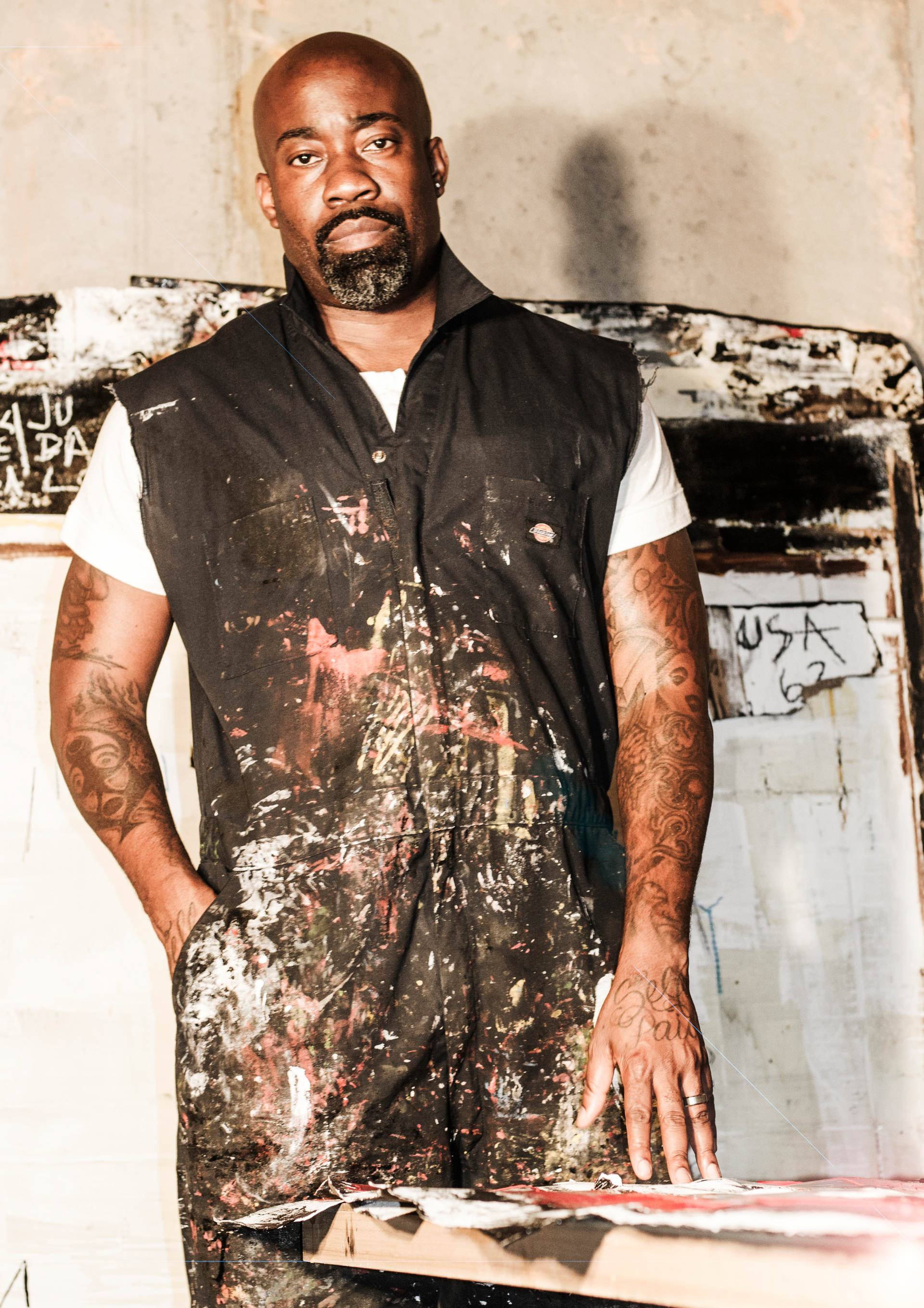Exploring Okeeba Jubalo's 'Jim Crow Fantasies'
The artist's provocative new solo exhibition opens Feb. 17 at the Westside Cultural Arts Center
Jubalo candidly talked with CL about his aim of sparking conversation and change through his pieces, courage through art, and why he’s not creating work for the faint of heart.
What sparked you to begin working on this series?
This series was driven by my need to tell our truth. When I use the word “our” I am referring to the African-American truth within our country. There are so many parts and pieces to our truth, and sadly we have been silenced by the establishment. You would think the arts would be a platform for me to speak my truth, but that is rarely the case. Even those who look like me have proven to be bigger blockers than those who look nothing like me. Being born as a black male in America is the one event that sparked my work. Over the years, I learned to rely on my art to create some sense of balance for myself ... like trying to find balance in a hurricane. If I had to narrow it down to say there was one event, America is that one event.
You've said "This work will probably make people uncomfortable — that is not my goal. But the truth has a funny way of making people uneasy." Can you elaborate on that?
The truth is always an uncomfortable thing for most people. Once you hear or see the truth then it forces you to either think or move in another direction. Being a black artist who is moving within a certain circle of exposure comes with a set of challenges that a white artist does not have to think about. Organizations like the National Black Arts Festival do not truly support raw and honest black art, they seem to be in the wallpaper business. Then, if my work offends the white establishment’s view on what black art is, I am pushed out of that scene as well.
The emotions within me are very raw and the rawness of my work is pure. The black experience in America is very raw, so my work reflects that. There is a great deal of beautiful work created by other black artists in America, but most of it doesn’t speak to me because it looks like these artists are trying to compete with white artists. It also looks like these artists are not trying to offend the powers that be — galleries and museums. That approach has trained the public, curators and collectors to see this level of black art as a cute, tranquilized, zoo lion with no teeth, dressed in a Tom Ford suit snoozing in one of the corners of the High Museum. My art is a full grown male Serengeti lion who hasn’t eaten in a week. When you step into the gallery you will either run for your life or get consumed whole. The truth is a very uncomfortable thing for an audience who has been playing with cute and tranquil zoo lions their entire lives.
What types of conversations do you hope are had in response to your work?
My goal is to always have conversations around my art that will lead to actions that will help us become better people. There are so many challenges we are facing in America, and it is bigger than black challenges. When we are not allowed to be honest with each other then we can never reach higher ground. America is a reflection of everyone not being able to reach higher ground. Like handing out sugar pills to those fighting lung cancer. We need the truth, not things that just taste good.
How did you decide what mediums to use for each piece?
My people are from Edwards, Mississippi, and Charleston, South Carolina, so my materials are based on my experiences as a child growing up in rural areas. I didn’t have all of the parts and pieces needed to build the perfect childhood. I learned to use what I have within my reach to build myself. Those skills transferred into my approach with my art. I love using building materials and found objects that you will not find in an art supply store.
Was the creation of this series therapeutic for you?
Yes, definitely. Creating the work is one part of the therapy, the second part is having the exhibition, the third part is selling the work and the fourth part his having a conversation with the collector after the work has been with them for a while. Those conversations with the collectors are very important for me. This allows for me to hear how the work has changed their view and flow within their lives.
The Dirty Dozen: Jim Crow Fantasies opening by Okeeba Jubalo. Free. 6-9 p.m. Fri., Feb. 17. Westside Cultural Arts Center, 760 10th St. N.W., 678-218-3740. westsideartscenter.com.
